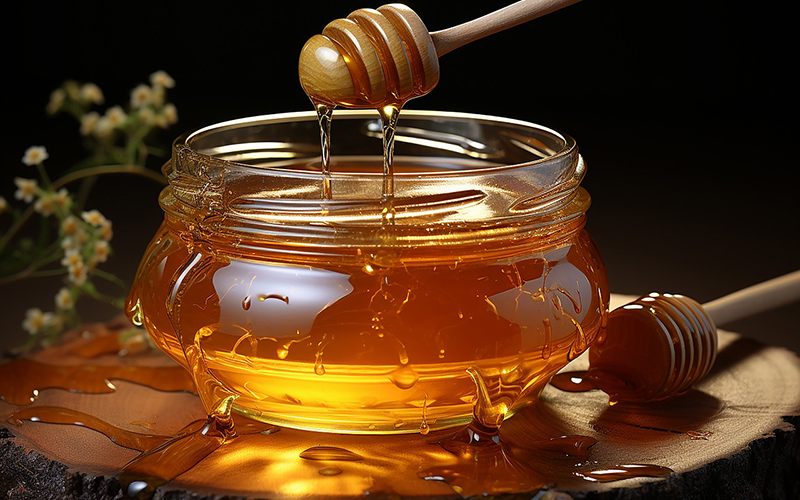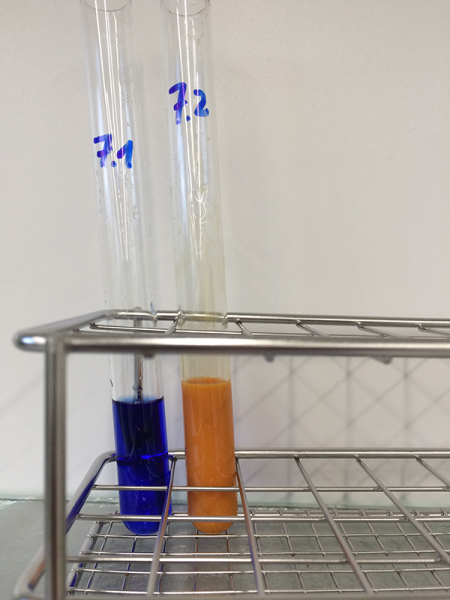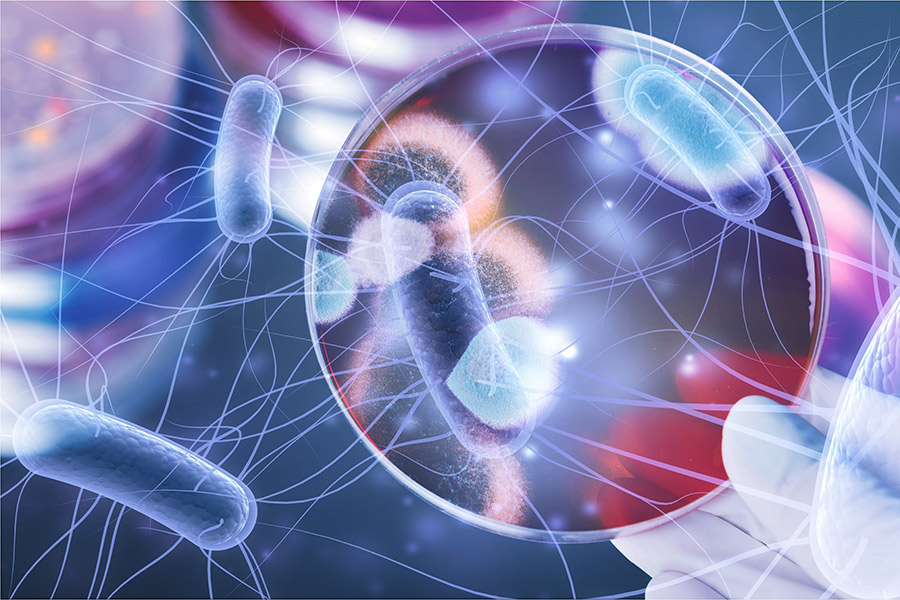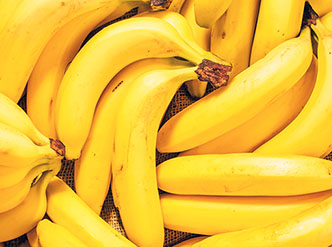Supporting materials
Download
Download this article as a PDF

This activity was presented at the Science on Stage Festival 2022 ![]()
Learn about a variety of biochemical aspects of honey through a series of simple experiments using the sugary product of bees.

Bees have repeatedly attracted media attention in recent years. Documentaries such as More than Honey[1] and alarming figures on bee mortality have helped the honeybee to take on a new role as a flagship species for biodiversity.
On the list of the world’s most frequently adulterated foods, honey ranks third (after olive oil and milk). Its definition is simple and beautiful: honey is the sweet substance that bees produce by ingesting nectar or honeydew, enriching it with their own substances, changing it in their bodies, storing it in honeycombs, and allowing it to ripen. Nothing shall be added to or removed from it.
In 2021, EU Member States imported 173 400 tonnes of natural honey from non-EU countries, worth €405.9 million, whereas 25 500 tonnes were exported by EU Member States outside the EU worth, €146.6 million.[2] Honey is the most expensive form of sugar, and that’s what makes fraud so lucrative. Fake or adulterated honey includes incorrect declaration of origin; bulking out honey with sugar syrup from corn, sugarcane, and rice; or completely artificial products.
Chemically, honey consists of different types of sugars. These can be mixed and produced artificially. In terms of biology, enzymes and a lot of other molecules are added in the stomach of the bee. This makes honey a fantastic starting point for learning about biochemistry.
In a series of experiments, students learn methods to distinguish real honey from artificial honey, and they investigate different aspects and phenomena of honey and bees. The activities are suitable for secondary school students.
If we talk about sugar in our daily lives, we normally refer to sucrose, but in nature we find a big variety of mono- and disaccharides. Sucrose is a disaccharide, in which one molecule of glucose is linked to one molecule of fructose. In the stomach of bees, there is an enzyme (invertase) that can break down sucrose ingested with nectar. Therefore, honey contains high amounts of glucose and fructose. Such a catalytic decomposition of sucrose can be easily carried out outside the bee’s stomach using acid instead of an enzyme, and so-called invert sugar is obtained. This can be used as artificial honey, or in the further production of jams, or sweets like gummy bears.
This activity takes about 20 min.
Heated sugar solution must be handled with care, as there may be boiling delays.
Safety goggles should be worn to perform the Fehling test.
As long as clean, uncontaminated lab equipment is used, students may taste the artificial honey.
Optional

The result is a viscous, transparent mass, which tastes very sweet. . Yellow food colouring and flavour compounds can then be added to make artificial honey. Commercially used honey flavour is a white crystalline powder, which gives the same taste and aroma as honey when it is diluted with other ingredients. It is basically dried honey produced from natural honey.
The Fehling test turns orange in the presence of mono- and disaccharides. If the Fehling solution stays blue, none of these sugars are present. Sucrose is an exception to the rule: although sucrose is a disaccharide, the potential reactive aldehyde group of the molecule is ‘hidden’ in the bond between glucose and fructose.
The Fehling test is negative at the beginning of the experiment when sucrose is the only sugar present. The catalytically acting protons of the lactic acid cause the hydrolytic cleavage of sucrose into glucose and fructose. The invert sugar at the end of the experiment reacts positively to the Fehling test and indicates that sucrose has been broken down into the two monosaccharides.

Some of the following questions can be discussed with the students:
Honey contains about 80% sugar. Water, another main ingredient, contributes about 17%. In addition, there are over 100 other components, such as amino acids, minerals, vitamins, small amounts of fatty acids, flavourings, and enzymes. The last of these can be used to distinguish real honey from artificial honey. This investigation reveals the enzyme activity of amylase in real honey.
The activity takes about 45 min (including 30 min of waiting time).

Dextrin (also called maltodextrin) is a degradation product of starch and lies between oligosaccharides and starch in its molecular size. Starch and dextrin discolour with Lugol solution (iodine solution). Iodine is deposited in the tunnel-like starch molecules and causes a colour change from orange to dark violet or black by changing the light-absorption spectrum. In test tube 1, amylase has digested dextrin, and the Lugol test is therefore negative. In real honey, various enzymes are present, including amylase. This is why the Lugol test in test tube 2 will also be negative. In test tubes 3 and 4, iodine will interact with dextrin, which is still present because of the lack of amylase.

Some of the following questions can be discussed with the students:
Honey should not exceed a certain water content. If you measure a water content above 20%, it might have been diluted with water or syrup, and it might ferment over time.
A refractometer determines the refractive index, according to how strongly the honey deflects a light beam. In other words, it indicates the sugar content or, indirectly, the water content of the honey. Since honey contains different sugars (mainly mono- and disaccharides), which have different effects on the refractive index, this does not determine the true water content. However, it is a standardized procedure in the quality guidelines of beekeepers, and the resulting error is accepted.
In this activity, a refractometer is used to measure the water and sugar contents of fake and real honeys. The activity takes about 15 min.


The unit of measurement is Brix degrees (symbol °Bx) and corresponds to the relative density of liquids. One degree Brix corresponds to 1 g of sucrose in 100 g of solution. The unit is mainly used in fruit, grape, and honey processing. Since these liquids contain various sugars (mainly glucose, fructose, and sucrose) in addition to water, the density is also used to indicate the approximate sugar or water contents. Honey should not exceed a water content of 18–20%. Should honey have a water content above 20%, it might have been diluted with water or syrup, and it might ferment over time.
Some of the following questions can be discussed with the students:
There are a number of additional experiments that can be carried out to learn more about the biology and chemistry of honey, as well as to link to other interdisciplinary topics. For example:
[1] More than Honey movie (German language): http://www.morethanhoney.ch
[2] Data on the international trade of honey in 2021 on the Eurostat website: https://ec.europa.eu/eurostat/web/products-eurostat-news/-/edn-20220819-2
[3] The Citizen Scientist Investigation on pollen diversity in Europe: https://coloss.org/c-s-i-pollen/
[4] The Great Sunflower project, a citizen science project focused on pollinators: https://www.greatsunflower.org
The article lists a number of discussion starters and also links to quite a lot of information that could be used to facilitate discussions across different school years. The article mainly links biology and chemistry but there are also science and society topics, for example, the fake food industry and citizen science
Curriculum links: biodiversity, enzymes, sugar chemistry, food testing, chemical analysis, density, chirality, and how science works.
Caryn Harward, Head of Science, The Oratory School, UK
Download this article as a PDF

What can we do about the antimicrobial resistance crisis? What does it take to develop a new medicine? Can we fight bacteria with everyday substances…

Learn about a variety of biochemical processes with these quick, simple experiments using one of the world’s favourite…

Sweet understanding: learn about the science of honeybees and their sugary product through a series of hands-on activities.